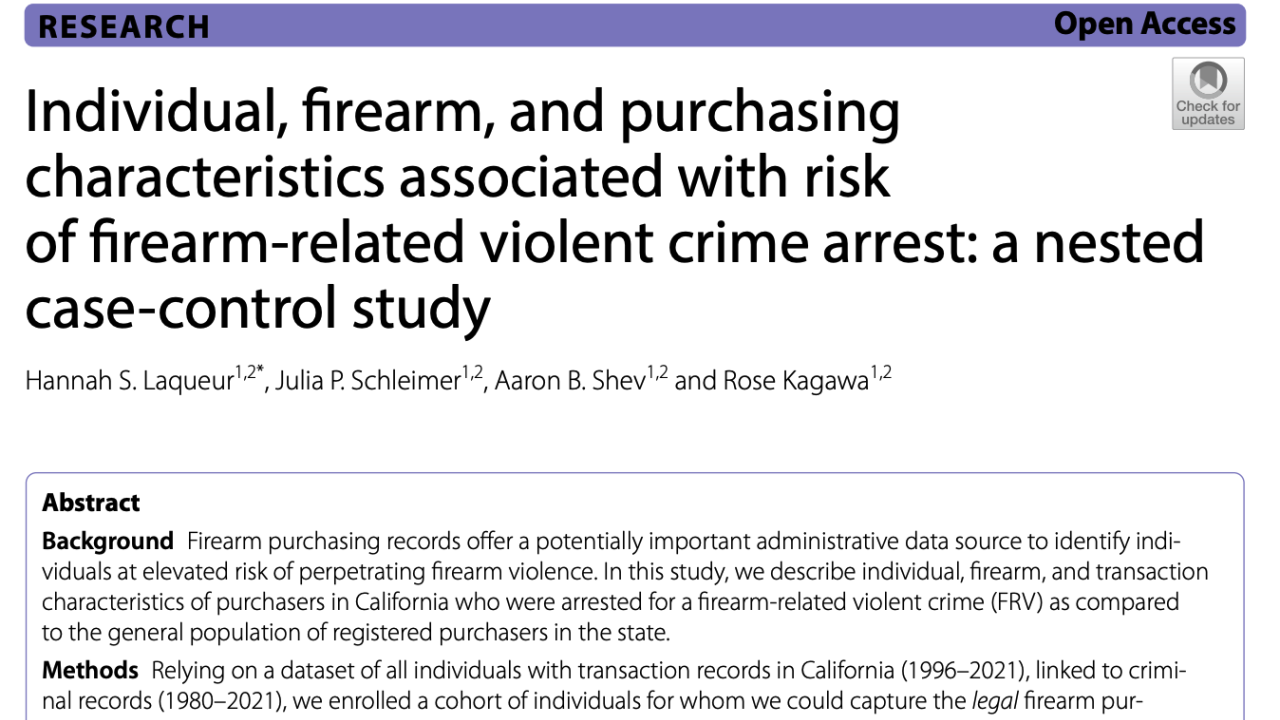
Individual, firearm, and purchasing characteristics associated with risk of firearm-related violent crime arrest
A nested case-control study
Quick Summary
- Given limited data on firearm transactions, there has been little research on whether the type of firearm an individual purchases or the nature of their purchase might serve as indicators of risk for subsequent firearm-related violent crime.
Background
Firearm purchasing records offer a potentially important administrative data source to identify individuals at elevated risk of perpetrating firearm violence. In this study, we describe individual, firearm, and transaction characteristics of purchasers in California who were arrested for a firearm-related violent crime (FRV) as compared to the general population of registered purchasers in the state.
Methods
Relying on a dataset of all individuals with transaction records in California (1996–2021), linked to criminal records (1980–2021), we enrolled a cohort of individuals for whom we could capture the legal firearm purchase history. We identified those arrested for FRV post purchase, and using incidence density sampling, gender-matched cases to ten purchasers (controls) who remained “at risk” at the time the case was arrested. We focused on the purchase closest in time prior to the arrest (“index” purchase). We implemented conditional logistic regression and included models with controls for individual- and community-level demographics, as well as interactions between firearm and purchasing characteristics and criminal history.
Results
The cohort included 1,212,144 individuals, of whom 6153 were arrested for FRV (0.5%). Cases were matched to 61,530 controls to form the study sample. The largest risk factor was a prior criminal history: purchasers had 5.84 times the risk of FRV if they had a prior arrest within three years of the index purchase (CI 5.44–6.27). Several transaction and firearm characteristics were also associated with FRV. For example, risk increased if the firearm was redeemed at a pawn shop (aIRR: 1.37, CI 1.05–1.77) and decreased if the transaction was a registered private party transfer (vs. retail purchase) (aIRR: 0.83, CI 0.76–0.90) or the firearm was a bolt action firearm (vs. semi-automatic) (aIRR: 0.64, CI 0.51–0.79). In the interaction models, most of the purchase and firearm features only remained significant among those with no criminal history.
Conclusions
Given limited data on firearm transactions, there has been little research on whether the type of firearm an individual purchases or the nature of the purchase might serve as indicators of risk for FRV. We found several transaction and firearm features were associated with risk of FRV. Notably, these features provided little evidence of additional risk for those with a prior criminal record.
Media Resources
Read the study in Injury Epidemiology
